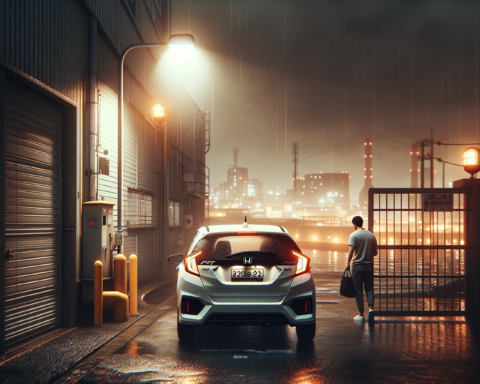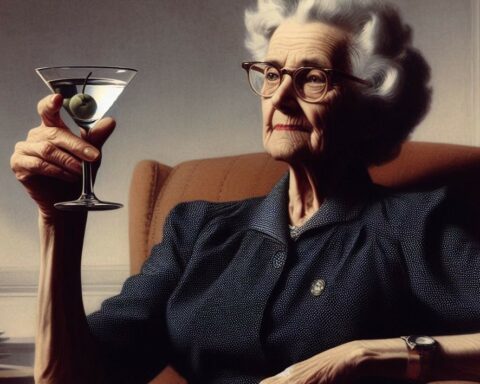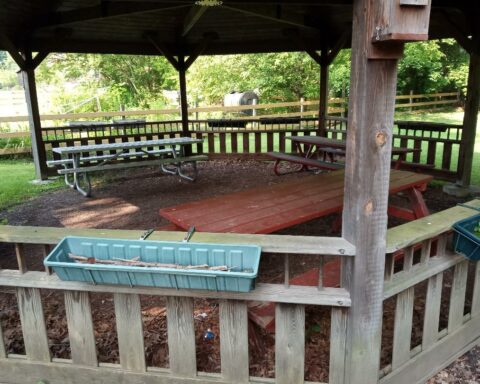The title is a line from The Rime of the Ancient Mariner by Samuel Taylor Coleridge, spoken by a sailor surrounded by a salty sea. The sailor had no choices, but we do. We have available fresh water, for now, and can choose to use tap water, filter it or not, and bypass the aisles of bottled water when we shop. We can choose to help ourselves and Mother Earth.
One of the new drinking water stations that has been installed around town is close enough that I can plan my daily walk to use it. It offers a standard fountain for people and a low-level one for dogs. It also has a bottle filling feature, which is why I include School Street in my walk (for Williamstown Elementary School, or WES), the playing fields of which you can see behind the blue post that is the water station. The students have been given individual bottles to encourage them to choose refillable over disposable.
Microplastics slough off synthetic fabrics, tires, and plastic packing materials. Disposable bottles are one of the worst polluters, filling our landfills and our oceans, harming our wildlife and ocean creatures, and compounding climate change. But there is another reason why refillable bottles should be our choice for staying hydrated as we take advantage of the finally beautiful weather conducive to long days hiking, fishing, or stretched out on a beach.
On June 5 the journal Environmental Science and Technology released a report titled Human Consumption of Microplastics. Lead researcher Kieran Cox and his team reviewed 26 previous studies that had sufficient data for their purposes. They looked at the levels of microplastic particles in fish and shellfish, sugars, salts, beer, and both bottled and tap water. They projected the dietary intake of each of these for men, women, and children based on the 2015-2020 Dietary Guidelines for Americans.
Foods for which they did not have sufficient data include processed foods, meat, baked goods, dairy, fruits, and vegetables. They speculate that it is likely that they contain high numbers of microplastics as well. The clearest findings come from the study of water. The report states that “Annual microplastics consumption ranges from 39,000 to 52,000 particles depending on age and sex. These estimates increase to 74,000 and 121,000 when inhalation is considered. Additionally, individuals who meet their recommended water intake through only bottled sources may be ingesting an additional 90,000 microplastics annually, compared to 4,000 microplastics for those who consume only tap water. These estimates are subject to large amounts of variation; however, given methodological and data limitations, these values are likely underestimates.”
While only the abstract is available to non-subscribers, the findings were quickly picked up by other journals and news outlets. They should be shouted from the rooftops, because unless everyone is on board, we will not turn the tide.
Guardian environment editor Damian Carrington commented “Scientists do not know what happens when microplastics are inhaled, but the new study speculates that ‘most inhaled particles will be ingested’ rather than coughed or sneezed out. The researchers also estimated that microplastic particles settling onto a single meal per day could add a further tens of thousands to the annual amount consumed.”
In an earlier article titled Microplastic pollution revealed ‘absolutely everywhere’ by new research Carrington writes of the “everywhere” microplastics are being studied worldwide. He notes that “Research by the National University of Singapore found more than 400 types of bacteria on 275 pieces of microplastic collected from local beaches. They included bugs that cause gastroenteritis and wound infections in humans, as well as those linked to the bleaching of coral reefs.”
We should do everything we can to discourage plastic waste. Microplastics are being found in glacial ice, at the bottom of the deepest oceans, in human stool, and in nearly every brand of bottled water. They are in the creatures of land and sea, and in us. If we drink bottled water, we add microplastics to our systems and then recycle the bottles to continue to degrade the systems of earth. It’s a lose lose.








